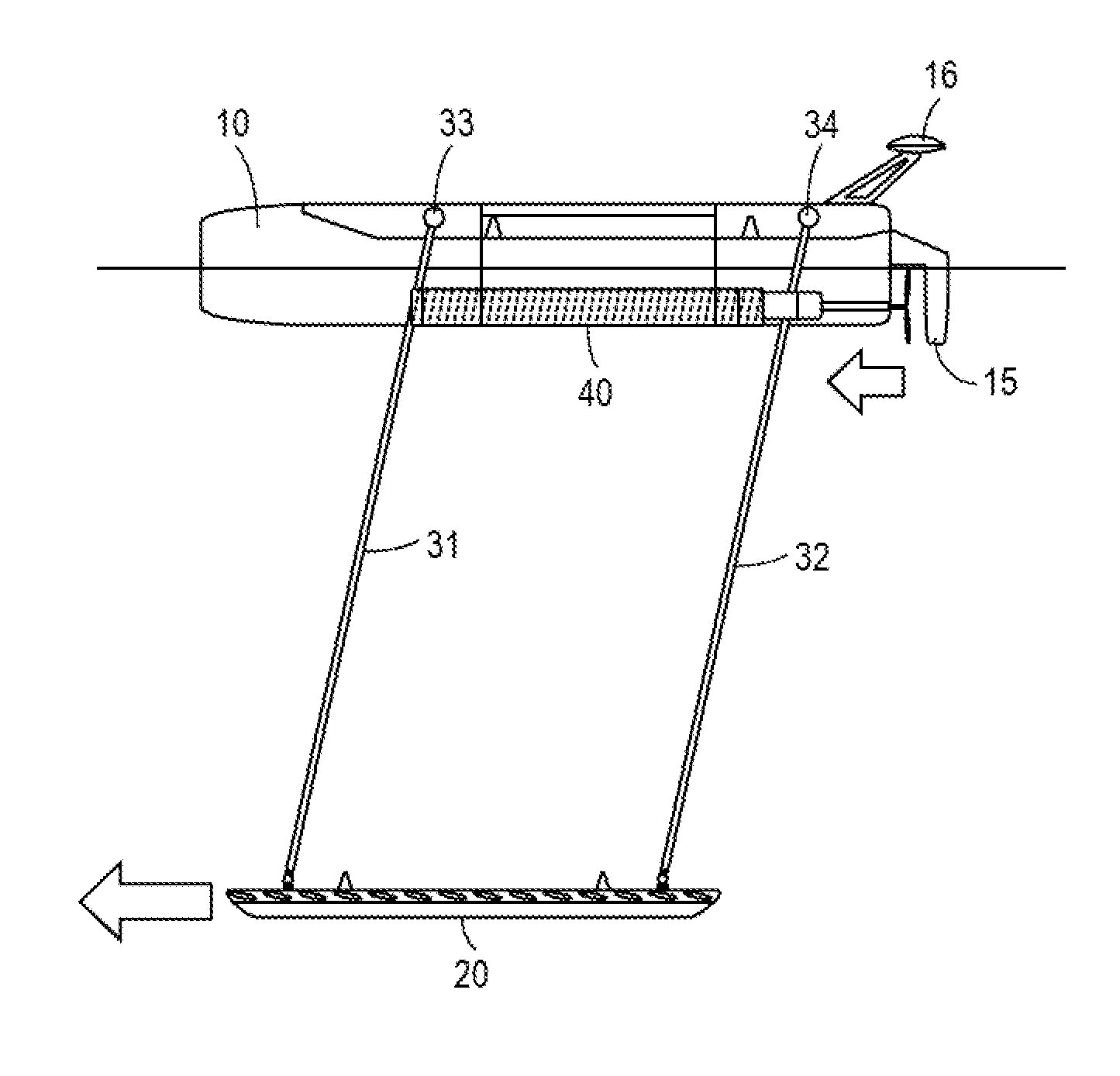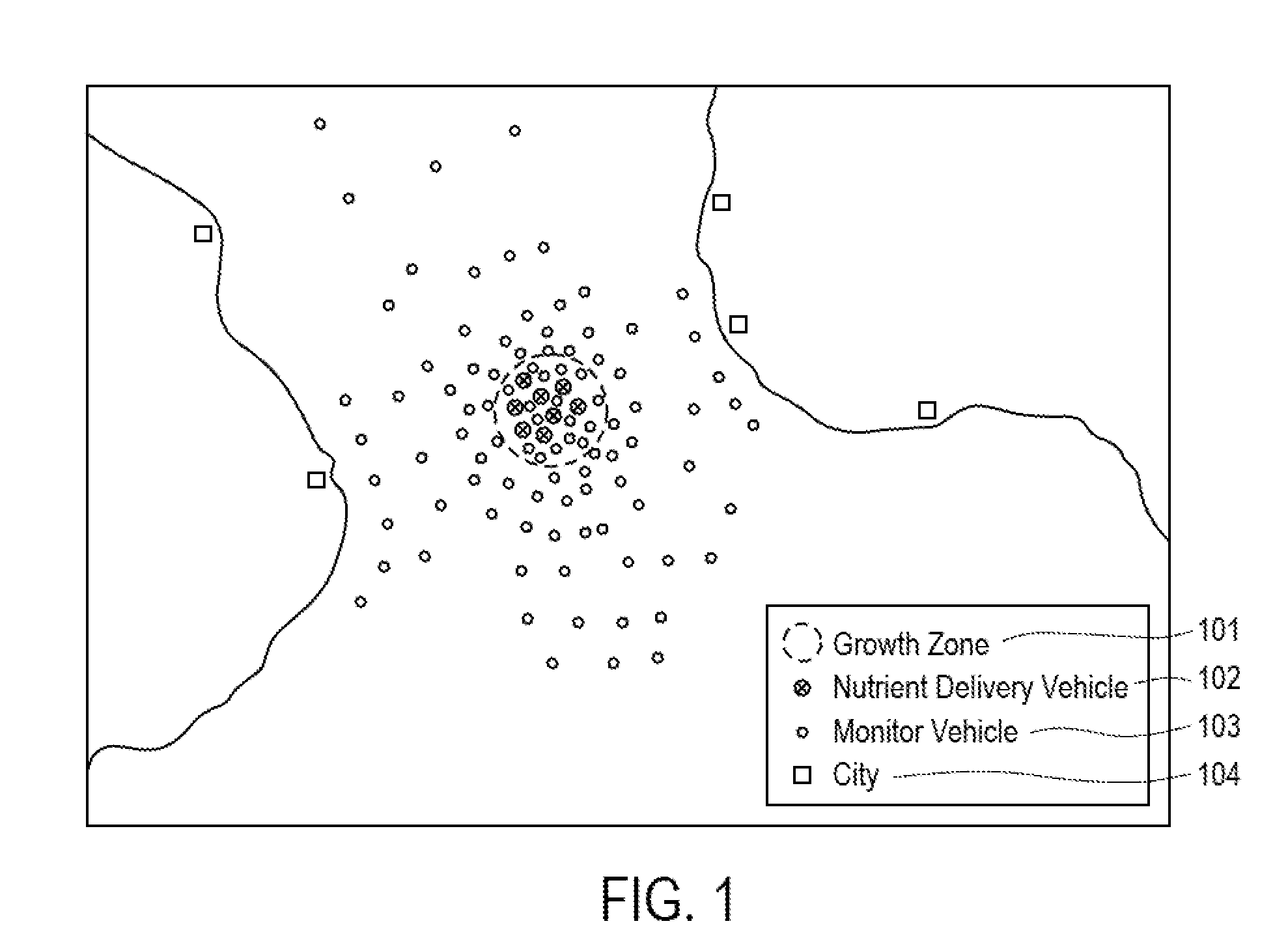Navigation of a fleet of autonomous vessels in current and wind
a technology of current and wind, which is applied in the field of global warming, vessel motility and control, and the biology of marine microorganisms, can solve the problems of human consequences and severe impact on global ecology, and achieve the effects of enhancing marine food chain, promoting phytoplankton growth in oceans, and improving fish stocks
- Summary
- Abstract
- Description
- Claims
- Application Information
AI Technical Summary
Benefits of technology
Problems solved by technology
Method used
Image
Examples
Embodiment Construction
Fertilizing the Ocean to Combat Global Warming
[0026]A major contributor to global warming is carbon dioxide (CO2). The concentration of CO2 in the earth's atmosphere is about 392 ppm. Pre-industrial concentration was about 280 ppm, the level increasing almost exponentially with a growth rate of 2.2% per year in the last decade. The concern is heightened by the hypothesis that CO2 has unique long-term effects on climate change that may be effectively irreversible. Solomon S et al., Proc. Natl. Acad. Sci. USA 106:1704-9, 2009. It has been estimated that to avoid dangerous climate change, a reduction of the CO2increase of 3.5% per year needs to be achieved Reducing CO2 can in theory be done by lowering CO2 emissions and by sequestering CO2 that is already in the atmosphere
[0027]A natural mechanism of CO2 sequestration is incorporation of carbon by phytoplankton. These are microscopic organisms that inhabit the upper sunlit layer of almost all oceans and large bodies of fresh water. The...
PUM
 Login to View More
Login to View More Abstract
Description
Claims
Application Information
 Login to View More
Login to View More - R&D
- Intellectual Property
- Life Sciences
- Materials
- Tech Scout
- Unparalleled Data Quality
- Higher Quality Content
- 60% Fewer Hallucinations
Browse by: Latest US Patents, China's latest patents, Technical Efficacy Thesaurus, Application Domain, Technology Topic, Popular Technical Reports.
© 2025 PatSnap. All rights reserved.Legal|Privacy policy|Modern Slavery Act Transparency Statement|Sitemap|About US| Contact US: help@patsnap.com



